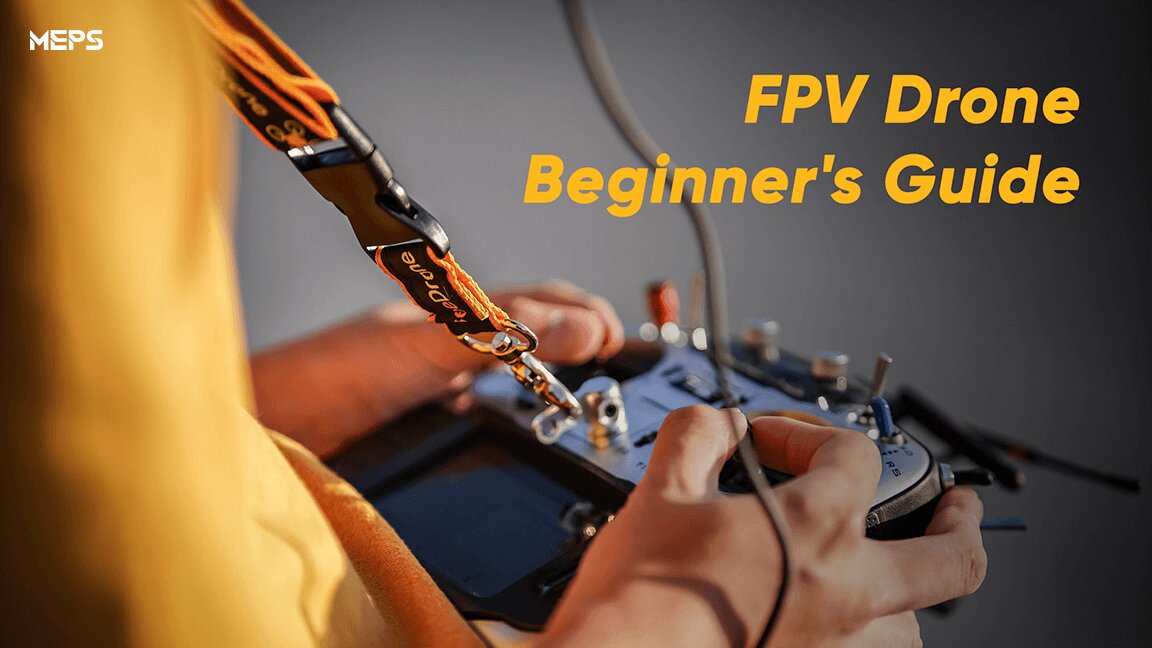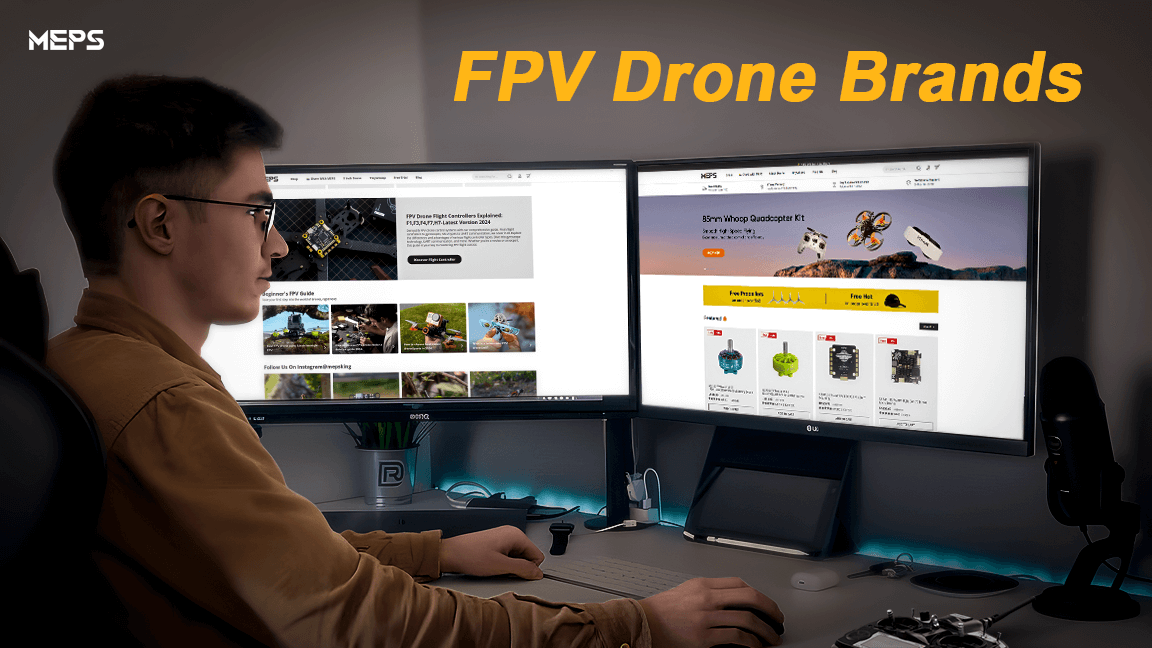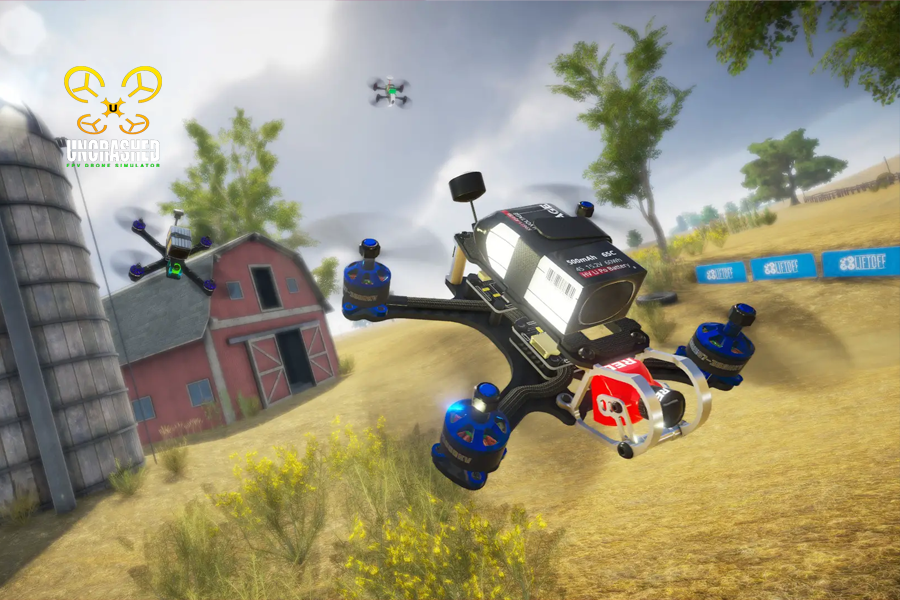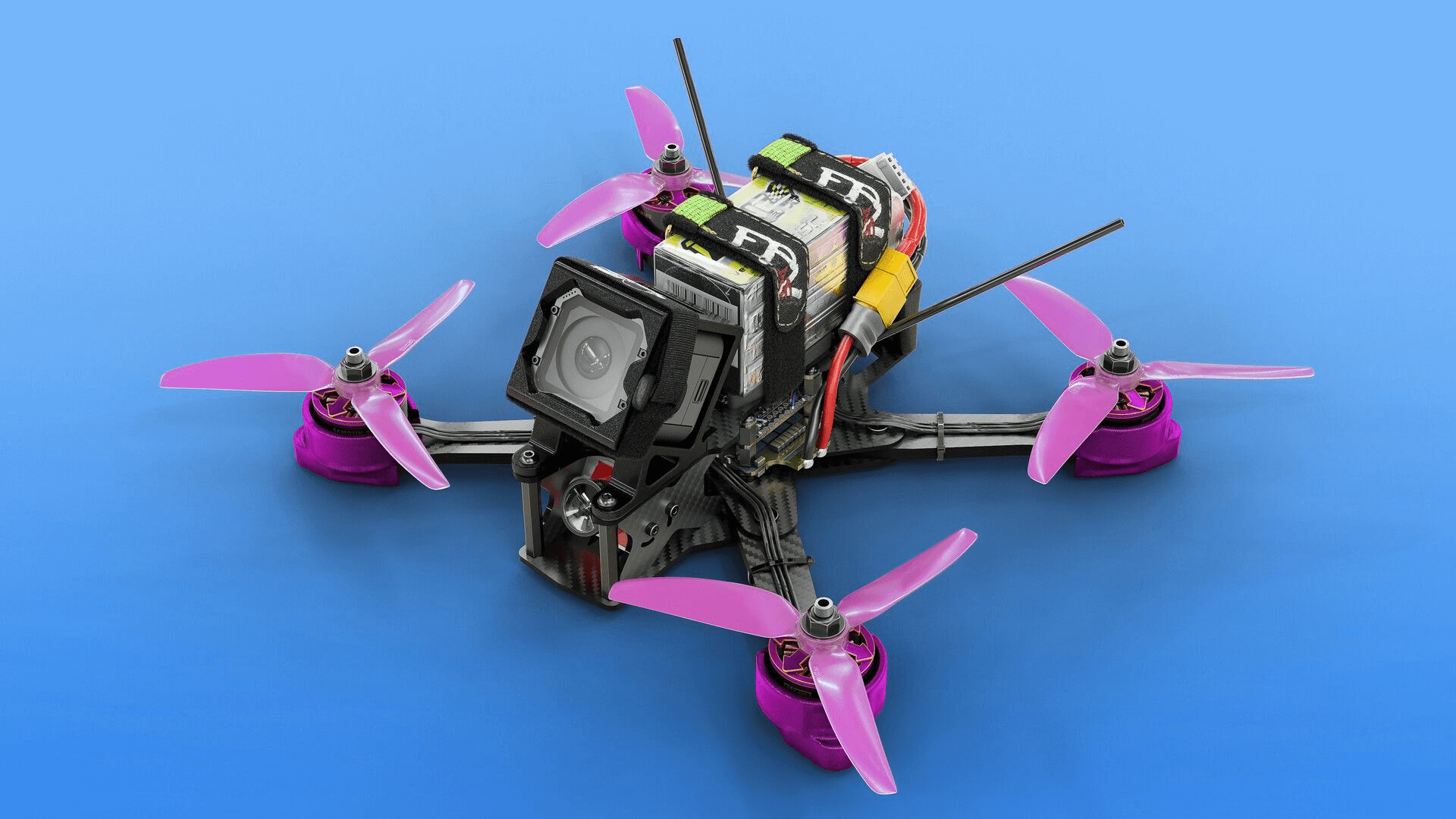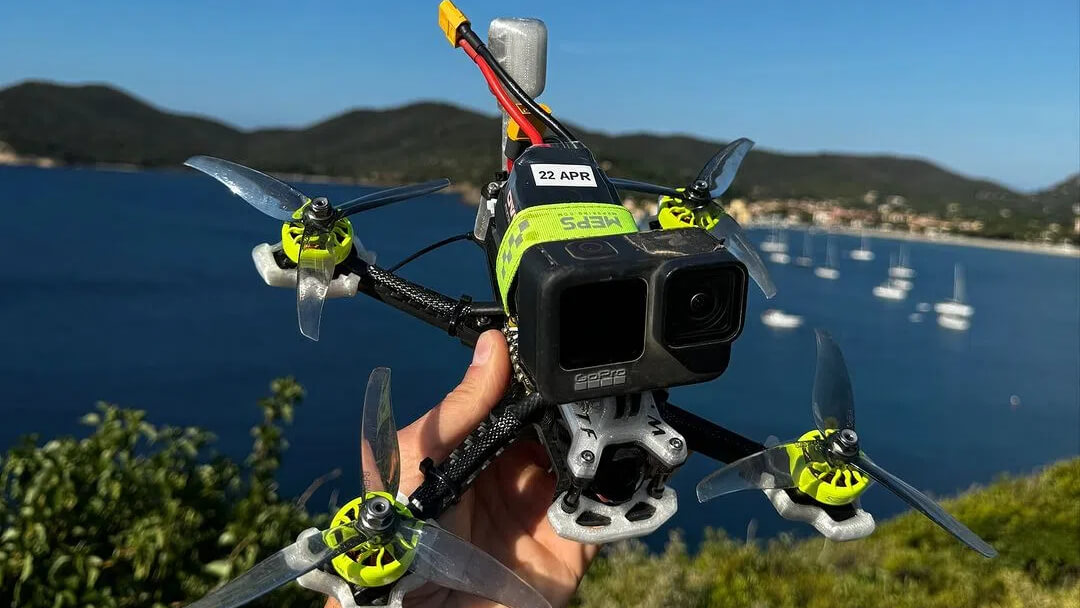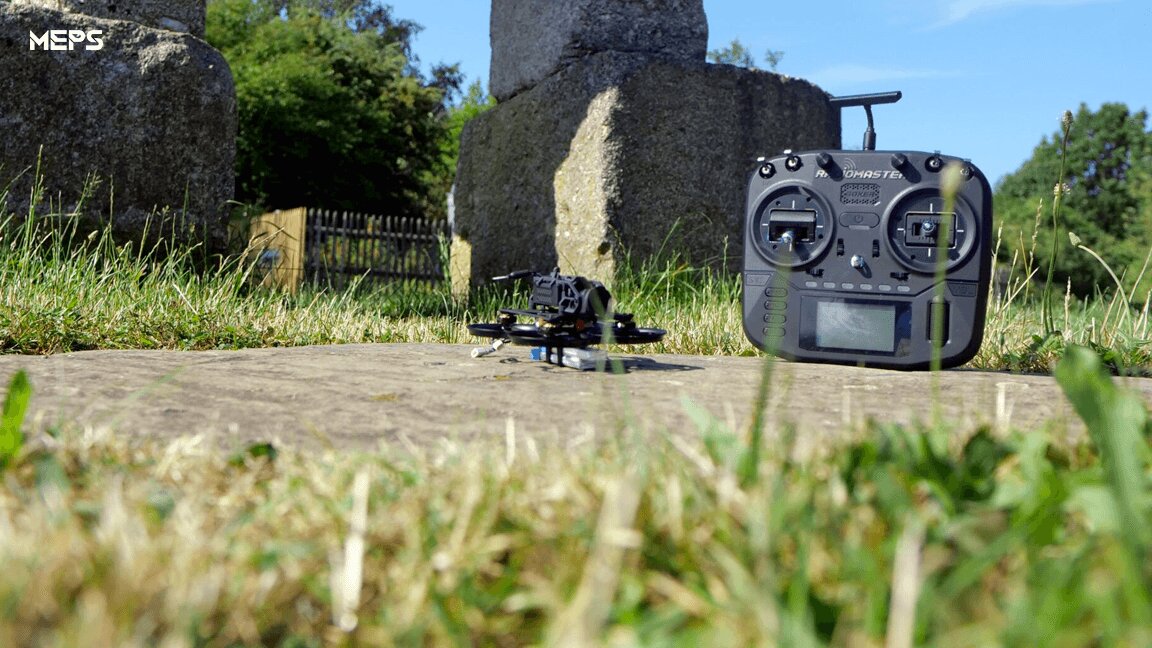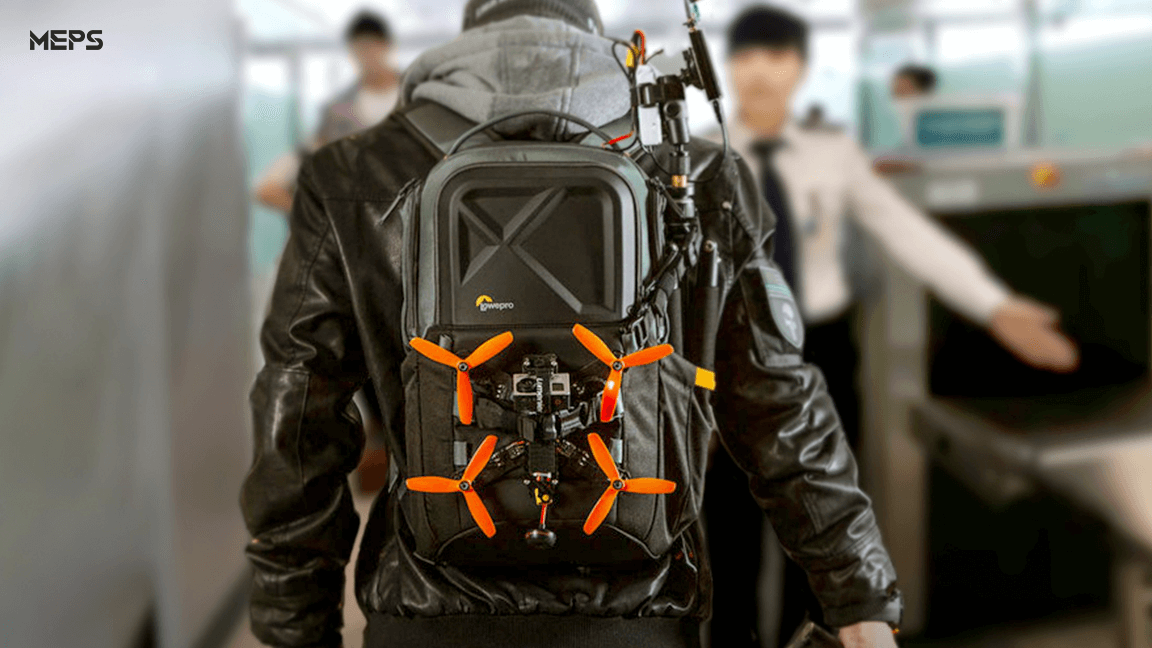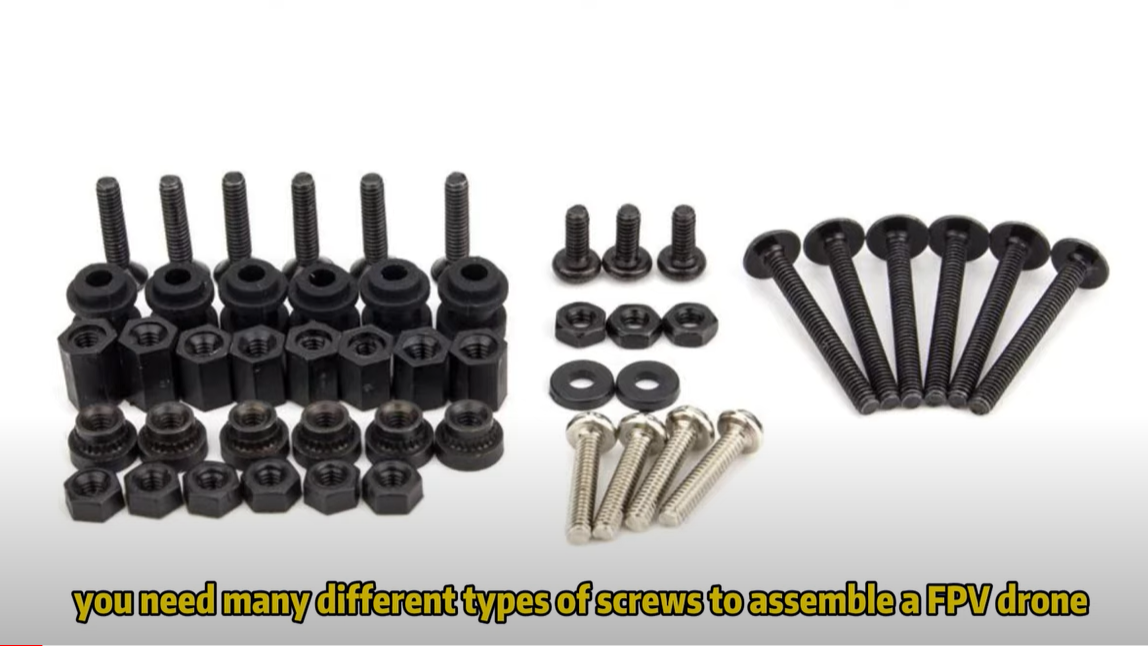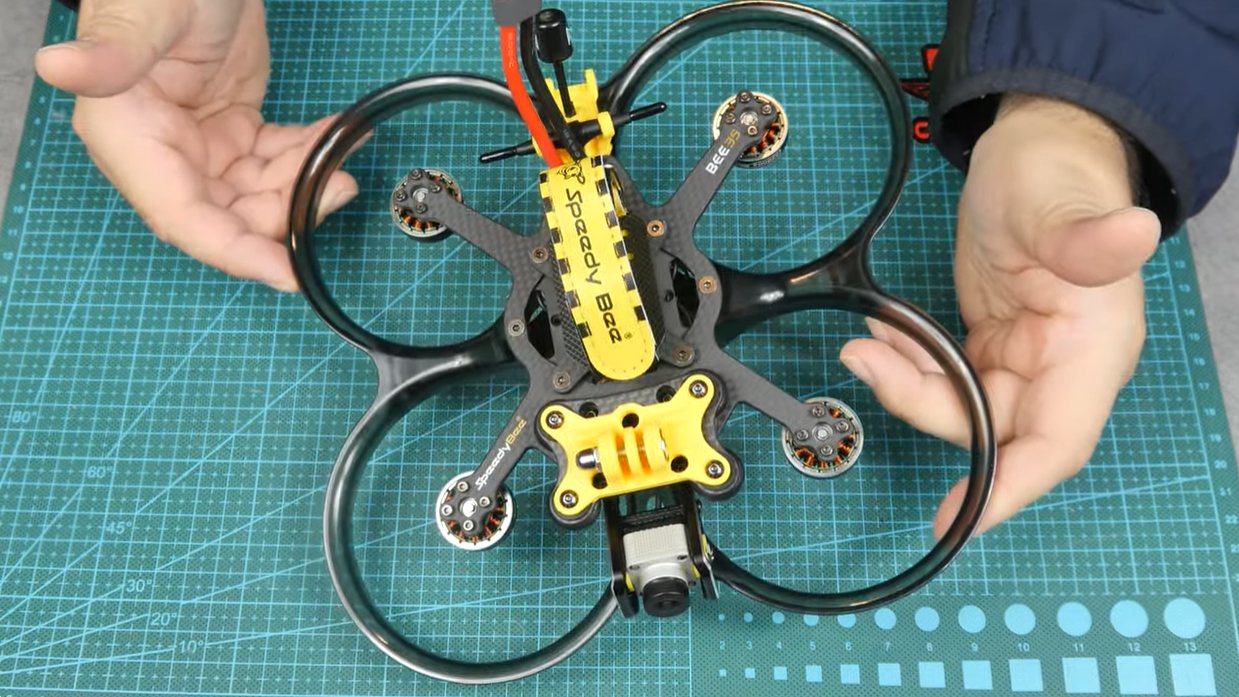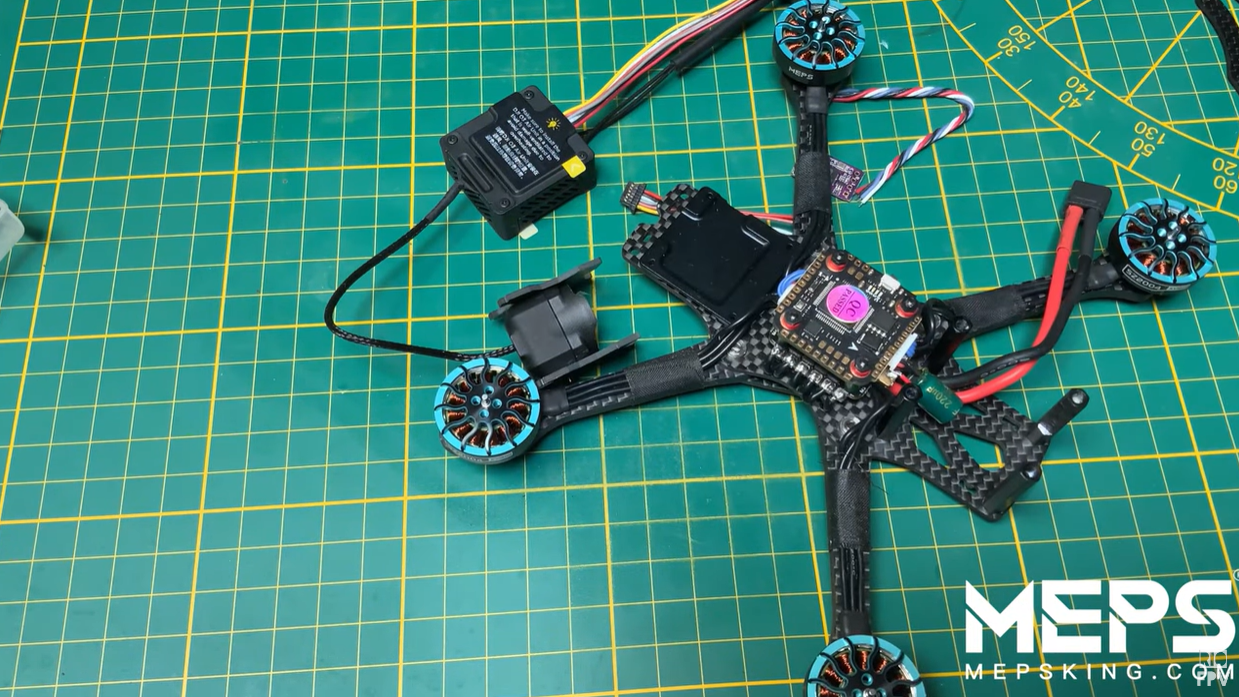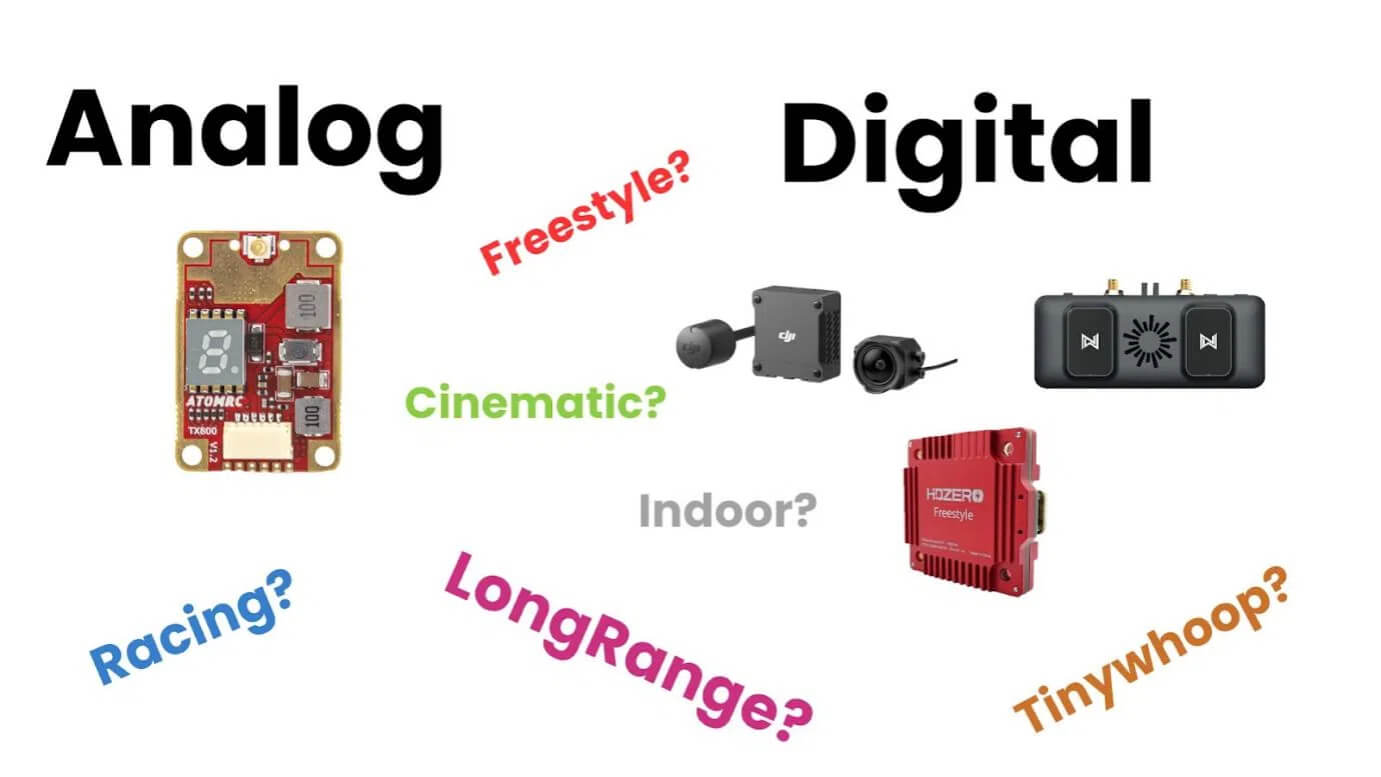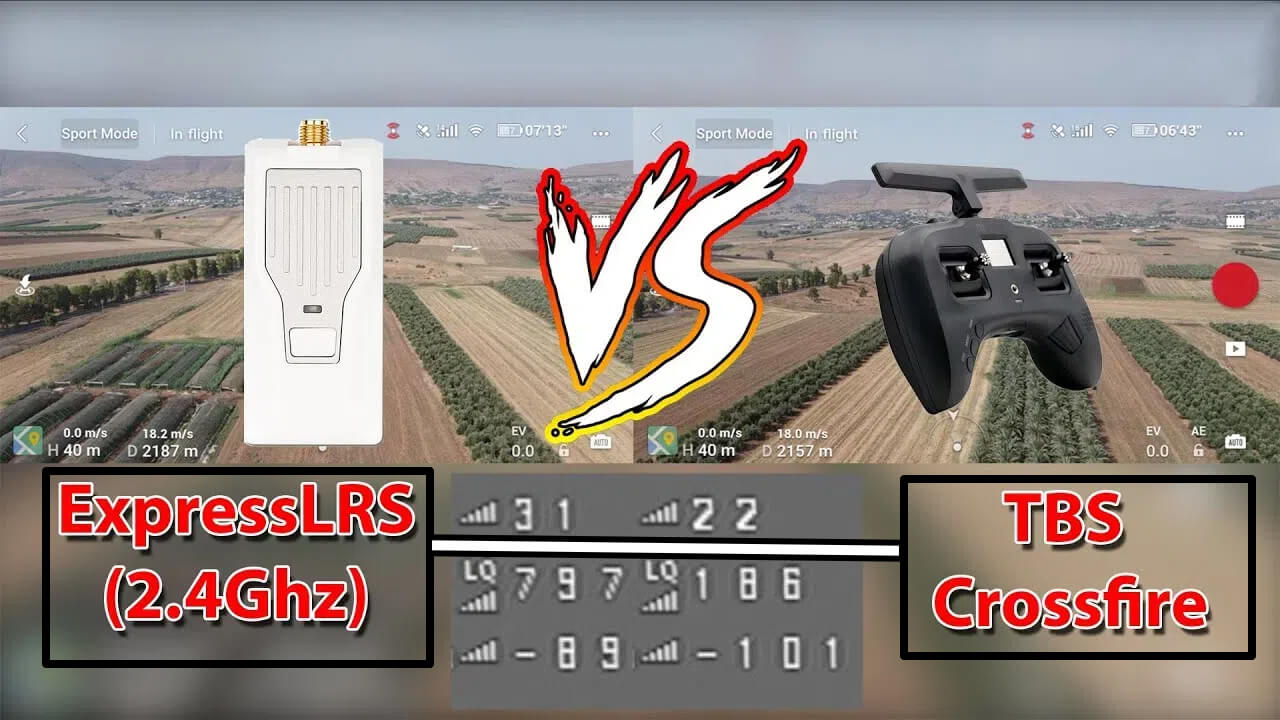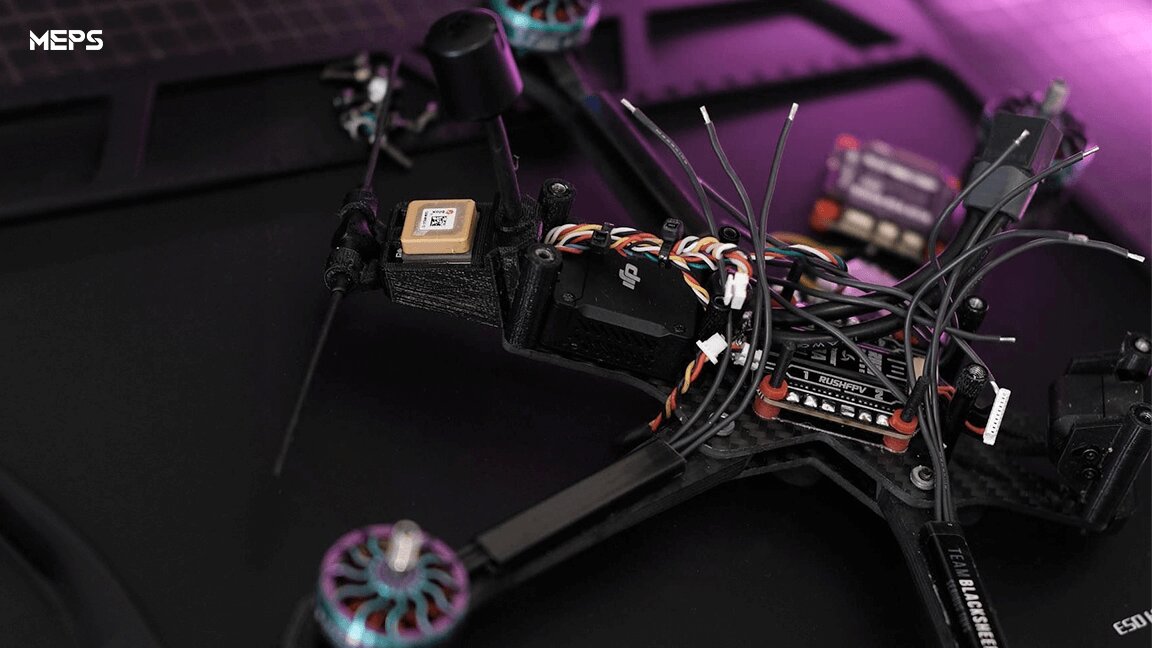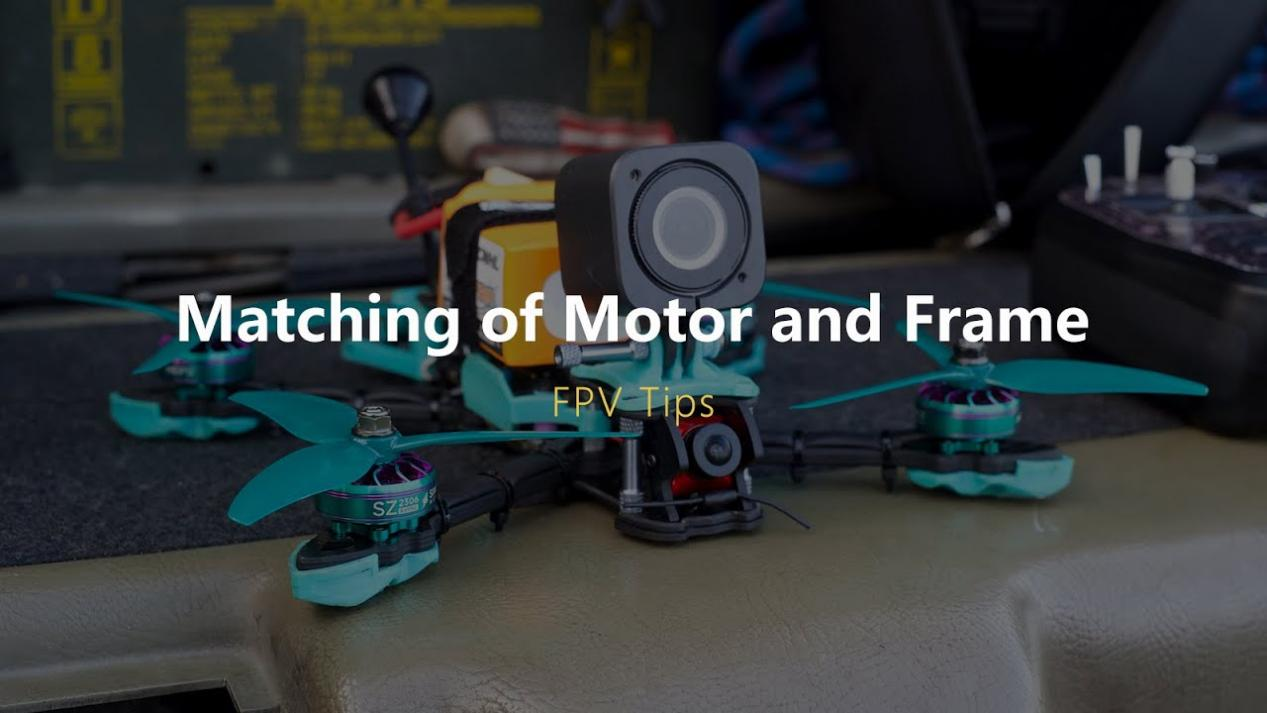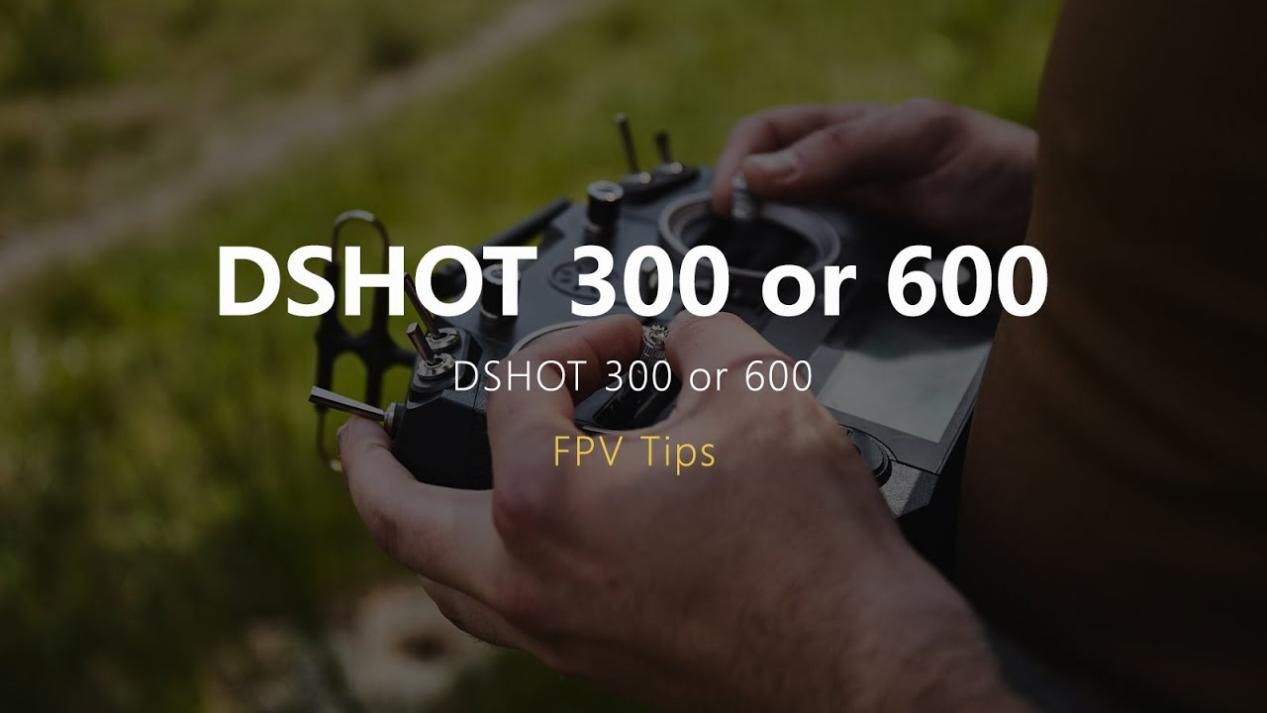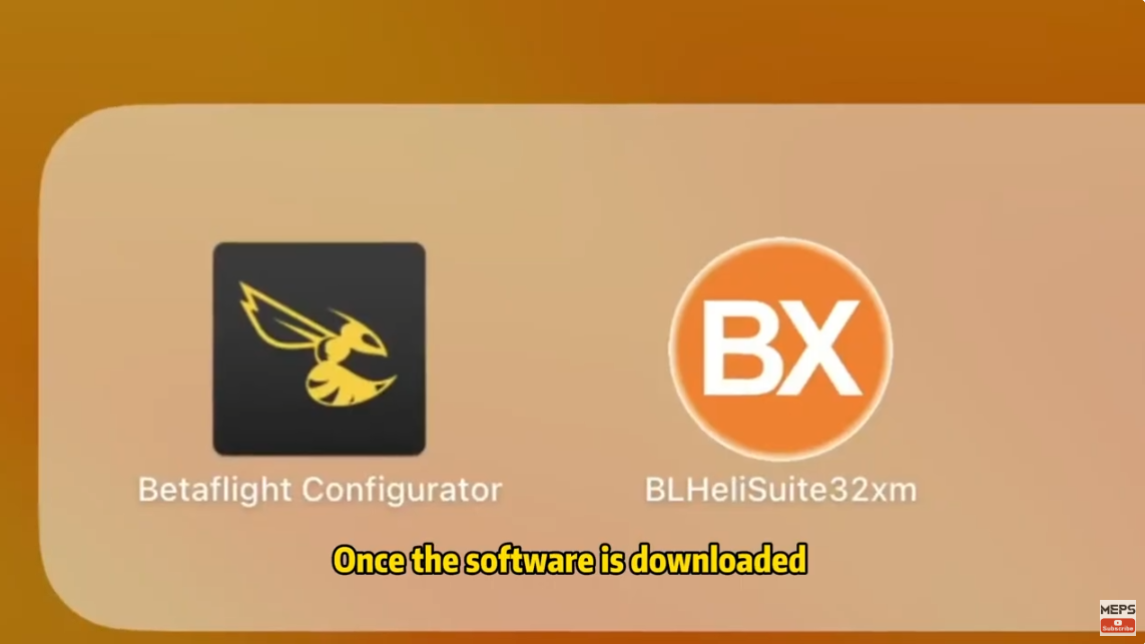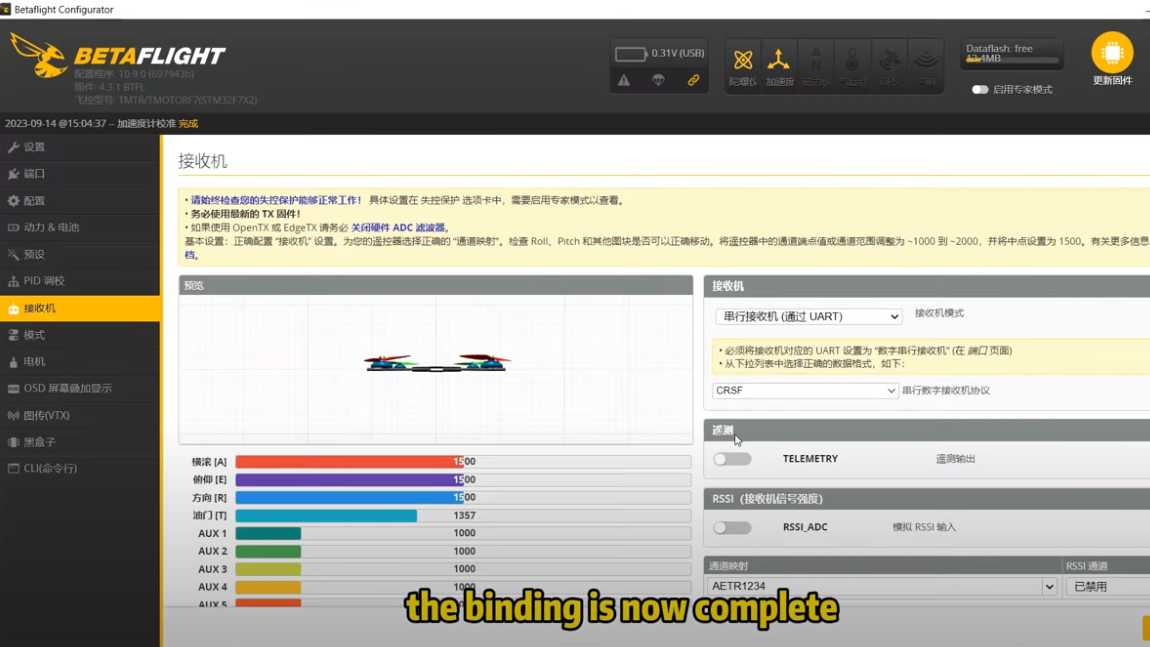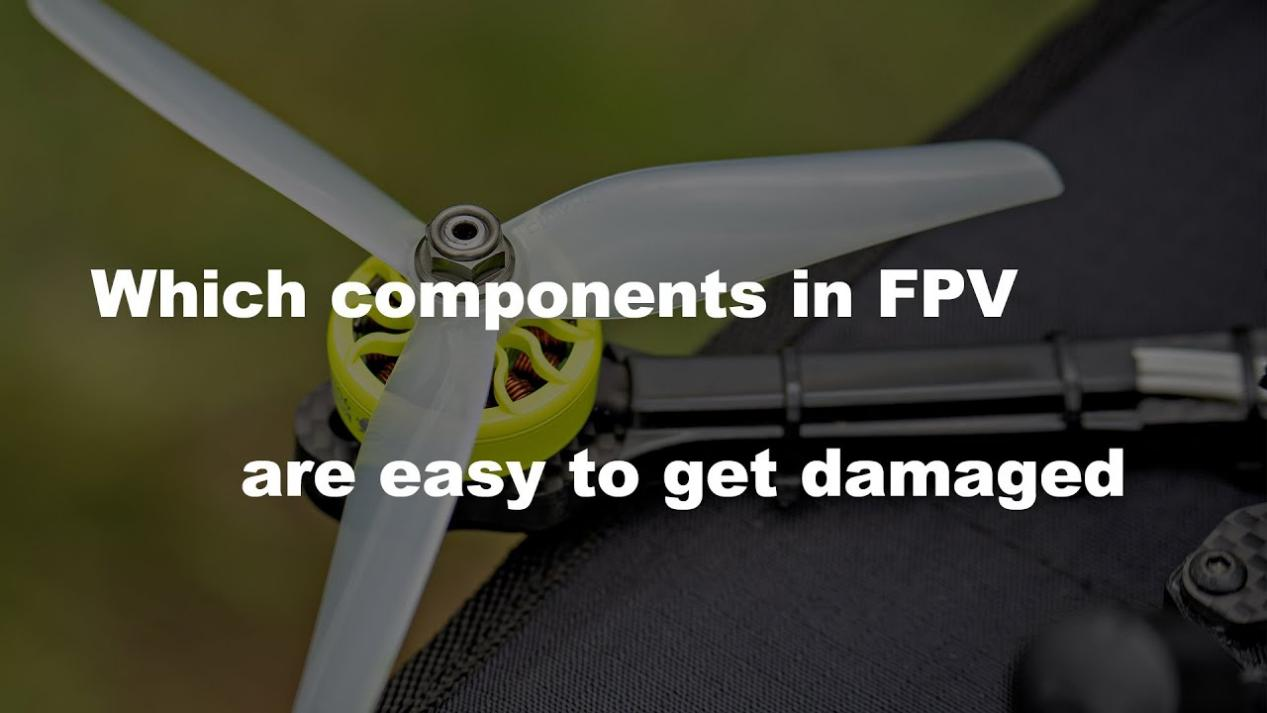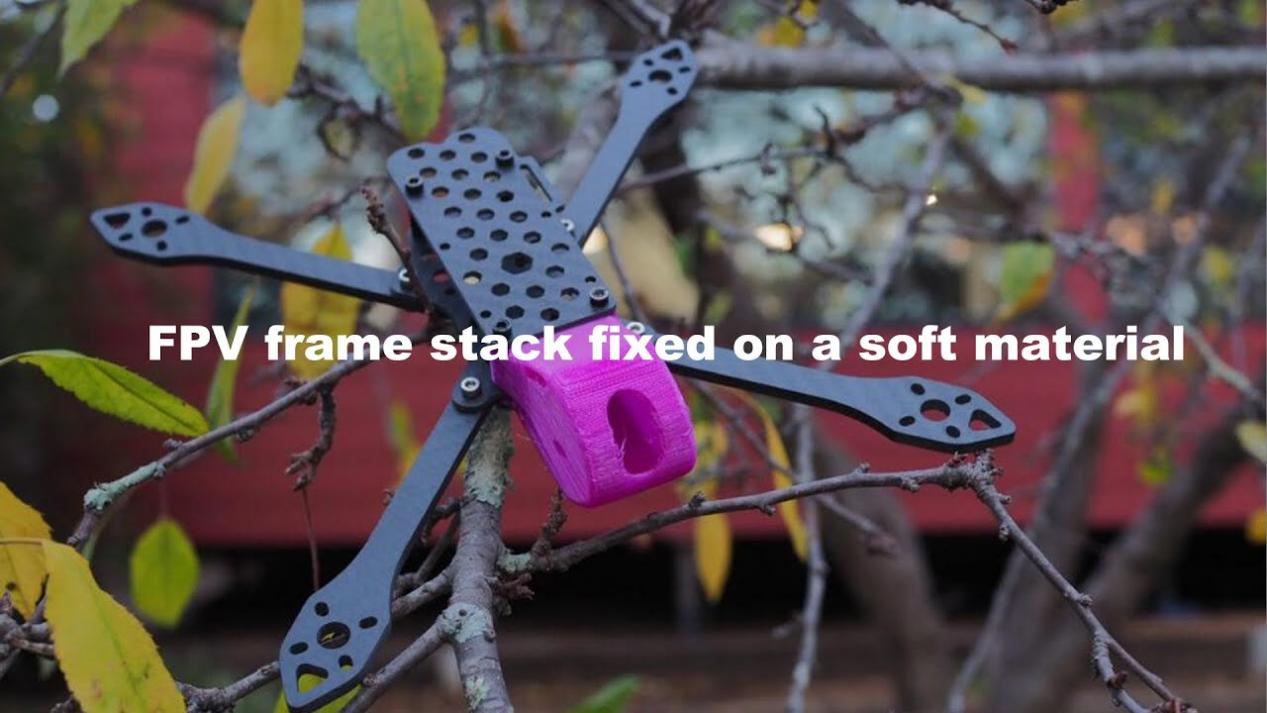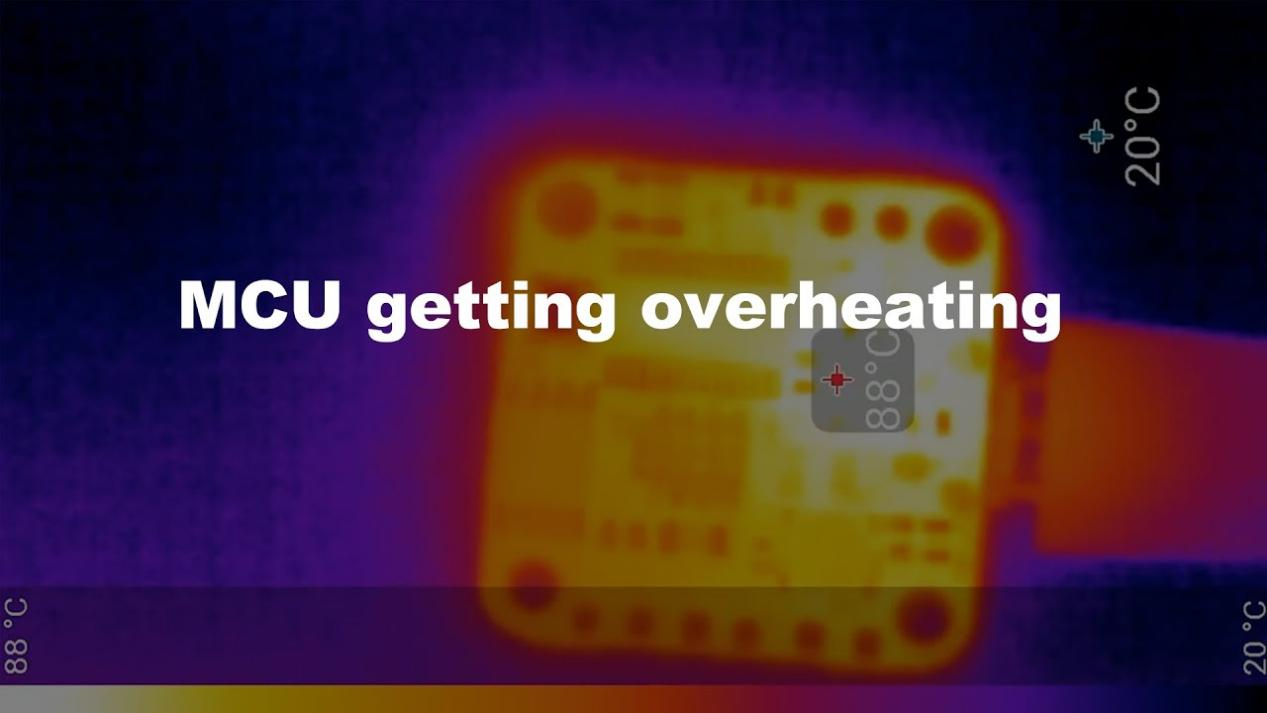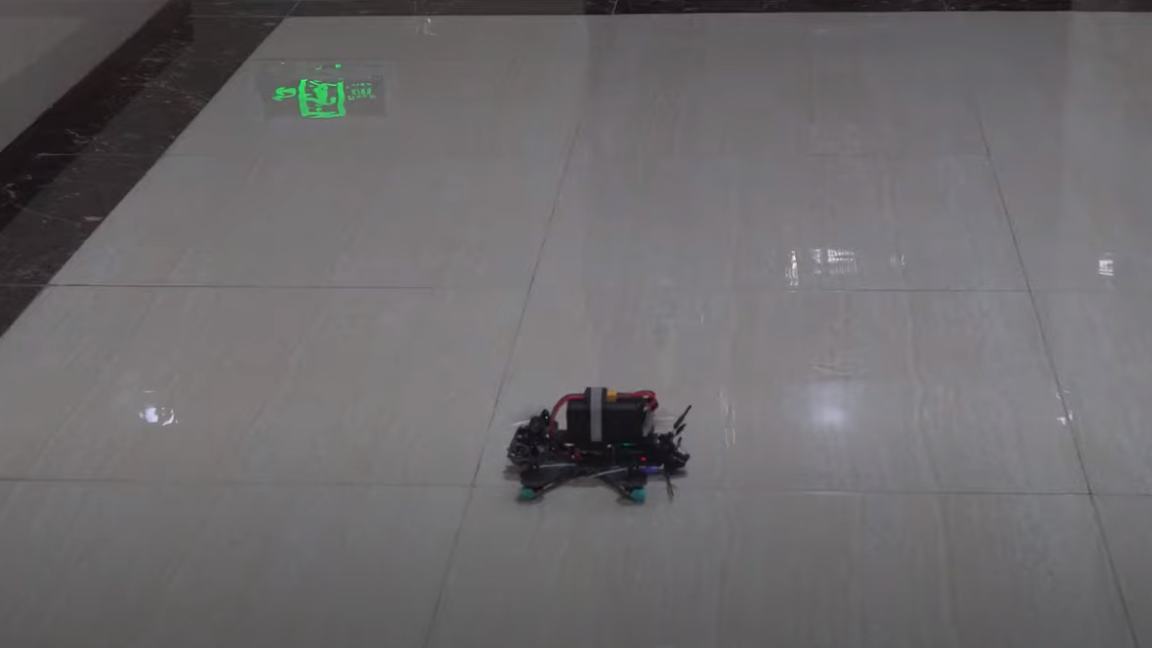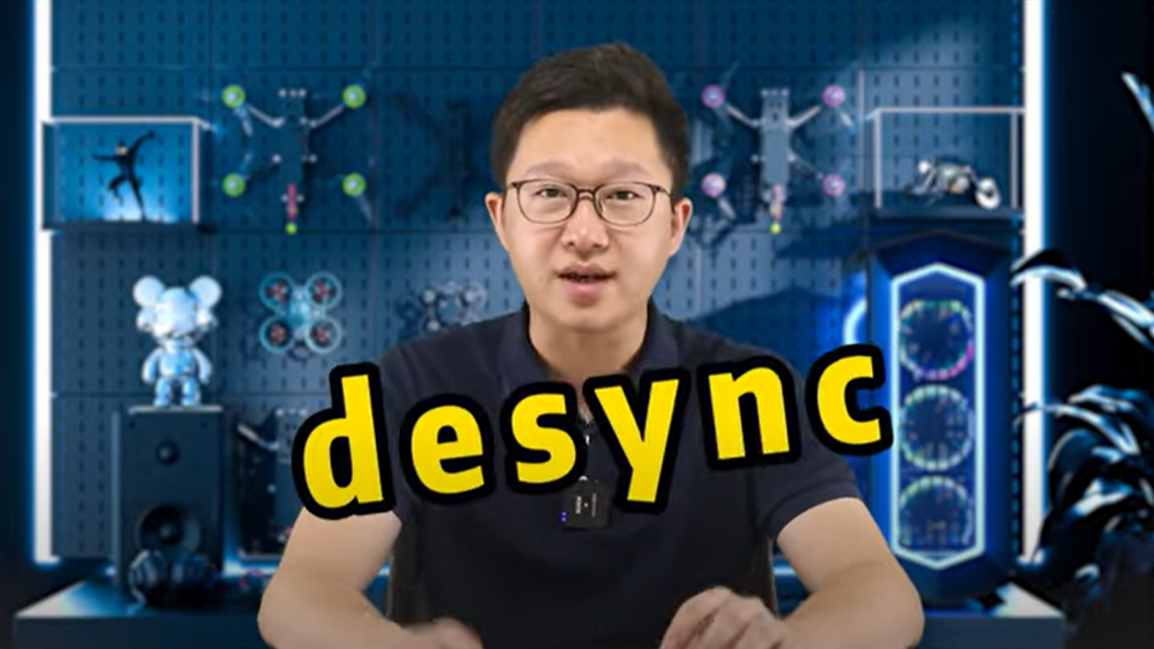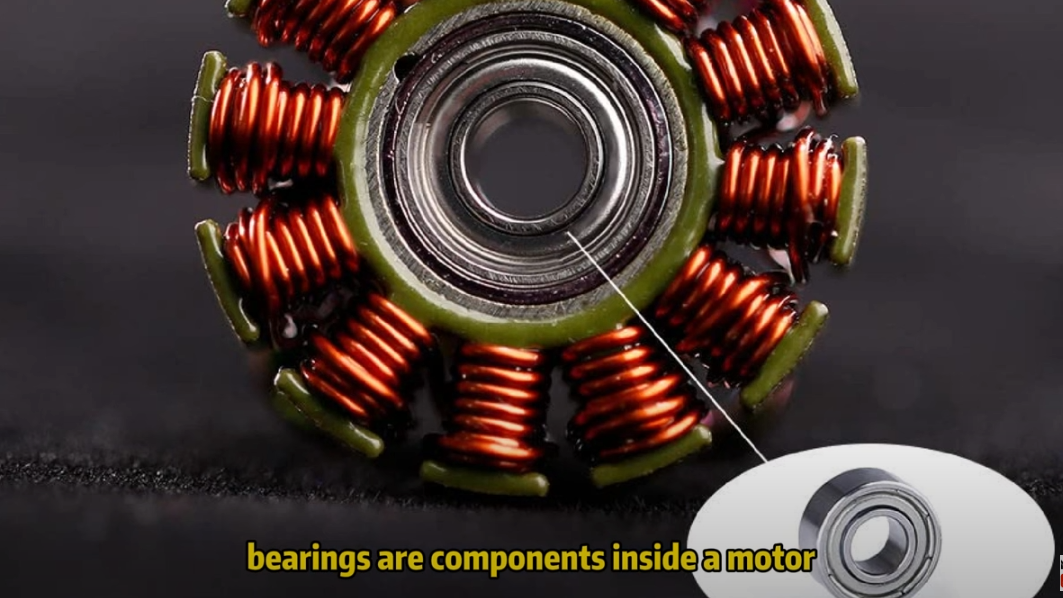Beginner’s guide
-
Matching the FPV Motor and Battery for Your Drone: A Comprehensive Guide
Introduction In the vibrant and ever-evolving realm of drone innovation, the careful and precise selection of motors and batteries emerges as a cornerstone for unlocking optimal performance. Whether you find yourself captivated by the mesmerizing world of drones as a passionate enthusiast or as a seasoned pilot seeking to elevate your aerial pursuits, the meticulous pairing of motor and battery components stands as an indispensable endeavor. Within the expansive confines of this article, we embark on an immersive journey, delving into the intricate intricacies of this vital match-up with meticulous detail. Our aim is to equip you with the knowledge, insights, and expertise necessary to navigate this dynamic landscape with confidence, enabling you to make informed decisions that will propel your drone's capabilities to new heights of excellence. Understanding FPV Drone Power Requirements The total weight of your drone is a key factor in motor and battery selection. Every additional gram will impact performance and flight time. When determining required thrust, consider the flight characteristics you're aiming for. Higher thrust may be needed for acrobatics or increased maximum speed. FPV Motor Selection Brushless motors are often favored for their efficiency and power compared to brushed motors. However, brushed motors may… -
How To Pick Receiver For Your Fpv Drone?
What Is a FPV Receiver? First we need to discuss what FPV receivers are and what is their job on a drone. Receivers are like ears on a drone that listen for your radio transmitter commands processes them and sends them further to flight controller that then converts them back into the commands and executes them. Some fpv receivers have better range and penetration than others but we will get to that in a moment. Do I Need Receiver On My Drone? Receiver is crucial component for your drone as without one you have no way of telling your drone what to do, some recent digital systems like DJI Air unit, DJI O3 and Caddx vista(smaller version of DJI original air unit made by Caddx) have built in receivers that can be used only with DJI transmitters, but you can still use regular external receivers. Receiver Telemetry, What Is It? Another feature on receivers is telemetry, But what does it do? In short receiver telemetry is data that is transferred in between TX and RX, for example: Battery voltage Current draw Stick positions Flight mode RSSI Link quality Transmitting power GPS coordinates GPS altitude GPS satellites acquired Magnetic orientation and…- 0
- 0
- 12.5k
-
FPV Drone Beginner’s Guide
Greetings from the world of First Person View (FPV) drones! Below, we've outlined everything you need to know about FPV drones. Whether your goals are freestyle flying, racing, or just seeing the sky from a different angle, this course will give you insightful knowledge and useful pointers to get you started. We can help you with anything from comprehending the fundamentals and choosing the appropriate fpv drone parts to learning safe flying techniques and maximising the capabilities of your drone. Together, let's take off on this thrilling journey to explore the countless opportunities presented by FPV drone flight! What is FPV Drone? The acronym for first person view is FPV. A drone with a camera that broadcasts live video to goggles worn by the pilot is known as an FPV drone. The operator can operate the drone while on the ground by using this real-time "first-person" view, much like if they were in the cockpit. You can have an immersive experience by wearing goggles to fly an FPV drone and see the world via the drone's eyes. Because of an FPV drone's speed and agility, flying one demands a great deal of concentration, but the experience is genuinely amazing. When operating…- 0
- 0
- 605
-
What are the Law Requirements and Safety Issues in FPV Flying?
Are FPV Drones Legal in USA? The answer is yes. However, they must comply with the Federal Aviation Administration’s (FAA) regulations. These include drone registration, pilot certification for commercial use, and adherence to specific flying rules and no-fly zones. This guide will dive into FPV law requirements and the safety issues you need to be aware of when flying FPV. Law Requirements for FPV Flying Different nations or regions may have very different laws governing the use of FPV drones. It's critical to learn about and comprehend the particular laws that govern your region. The following typical rules might be in effect: Registration: In many countries, drone operators must register their drones with the local aviation authority. This registration helps in tracking drone ownership and monitoring drone activities. Altitude Restrictions: Drones typically face altitude limitations to ensure airspace safety. For instance, in the USA, drones are generally restricted to a maximum of 400 feet above ground level to avoid potential conflicts with manned aircraft. No-fly Zones: It's crucial to avoid flying drones near sensitive areas such as airports, military bases, and government buildings. Additionally, be aware of temporary no-fly zones that could be enacted during special events or in response…- 0
- 0
- 103
-
Do You Need a License to Fly FPV Drones in US?
The question of whether or not you need a licence to fly FPV drones has always been a problem for beginners. In the United States, navigating the skies with these innovative devices is not as simple as simply launching your drone into the air. Both hobbyists and commercial operators need to be aware of the licensing requirements set by regulators to ensure safety and compliance. Whether you are flying your drone for recreational or professional purposes, it is important to understand if you need a licence and which specific licenses are required. This guide examines the various licensing requirements enforced by the Federal Aviation Administration (FAA) for FPV drone operations, as well as the additional Federal Communications Commission (FCC) licenses required for the use of certain communications equipment. Do You Need an FAA License to Fly FPV Drones? For recreational use, you do not need a license to fly an FPV drone. However, if you are using it for commercial purposes, you will need to obtain a remote pilot certificate from the FAA. The recreational flyers regulations are roughly as follows, to learn more you can check the official FAA recreational flyers guidelines. Recreational Flying For hobbyists flying FPV drones recreationally,…- 0
- 0
- 171
-
Can you take drone on a plane?
It can be a fantastic idea to bring a drone along for your travels in order to take some incredible pictures of your family or to record a breathtaking landscape. There are other restrictions to take into account, though. You can feel more at ease with the aid of our guide. Can you take drone on a plane? This will vary according on the airline and the destination country. Before deciding to bring your drone on a flight, it is advised that you confirm with the airline and the local Civil Aviation Authority (or equivalent) of your destination. The following provides an overview of what passengers need to know when flying with drones on select airlines and outlines restrictions on drone usage in certain countries. Airline Policies for taking drone on a plane Southwest Airlines For those flying Southwest Airlines, including international journeys, drones are permissible but must comply with battery regulations. A limit of 20 spare lithium-ion batteries is enforced, all of which must be carried in hand luggage. Batteries over 100 watt-hours (Wh) are restricted to two per passenger, provided they don't exceed 160 Wh. Batteries surpassing 160 Wh are strictly prohibited from both checked and carry-on luggage.…- 0
- 0
- 70
Recent posts
- TBS Crossfire (CRSF): Differences Between Nano RX and Micro RX 26/07/2024
- Matching the FPV Motor and Battery for Your Drone: A Comprehensive Guide 24/07/2024
- Which FPV System is the Best? 28/06/2024
- How To Pick Receiver For Your Fpv Drone? 25/06/2024
- FPV Receiver: difference between 2.4GHz and 915MHz and TBS ELRS 11/06/2024
- A Comprehensive Overview of FPV Drone Brands 26/04/2024
- The FPV Brand of HGLRC 26/04/2024
Builds
-
Understanding FPV Assembly: A Guide to fpv drone Screws
Introduction: This guide introduces the various types of screws essential for FPV drone assembly, covering their specific uses from frame assembly, securing ESCs and flight controllers, motor mounting, to attaching top plates and cameras. It highlights the importance of using the correct sizes and types, like M3 button head screws for frames, long screws for ESCs and flight controllers, socket head screws for motors, countersunk screws for sleek top plate design, and M2 or M1.6 screws for camera mounting, ensuring a successful and efficient drone build. Frame Assembly: Uses M3 button head screws, 8mm or 10mm, with standoffs. ESC/FC Mounting: Employs long screws around 34mm; smaller drones use M2 screws. Motor Mounting: Uses socket head screws, with lengths varying for arm or guard mounting. Top Plate: Utilizes countersunk screws for a flat surface. Camera Mounting: Involves M2 or M1.6 screws, 4mm or longer. What you need: Freestyle Recommended: Racing Recommended: Here are the products shown in the video: Video Overview Screws, small and essential, you need many different types of fpv drone screws to assemble a FPV drone, in this video we will introduce some commonly used screws and help you get a basic understanding of them. FPV drone Screws…...- 0
- 0
- 194
-
How to mount a 3.5″ cinewhoop with MEPS 2004 motor
Introduction: This video offers a concise guide on assembling a 3.5-inch CineWhoop drone with a focus on installing a digital video system, highlighting key assembly steps and flight capabilities. Guide Overview: How to assemble a 3.5-inch CineWhoop drone with a digital video system. Key Components: Speedyb35 frame, MEPS 2004 motors, digital FPV. Tools: Hex wrenches, soldering iron. Assembly Steps: Frame setup, electronics installation. Betaflight Setup: Configuration for optimal performance. Motor Testing: Ensuring correct motor order and spin direction. Flight Insights: Agility and power evaluation, propeller upgrade suggestion. Final Note: Drone ready for flight, balance of power and efficiency highlighted. What you need: Freestyle Recommended: Racing Recommended: Here are the products shown in the video: Video Overview In today's video, we're diving into the exciting process of assembling a 3.5-inch CineWhoop drone equipped with potent motors and a digital video system. While we focus on a digital setup, converting to an analog system is straightforward for those who prefer it. Initial Impressions and Flight Test Unveiling the Drone We begin by unboxing and preparing the drone for its maiden flight. Equipped with a new battery, the drone is remarkably agile, thanks to its 2507 motors. Despite using a powerful setup, I…...- 0
- 0
- 98
-
Building an Apex 4 Drone with MEPS 2004 motor: Step-by-Step Guide
Introduction: This guide provides a comprehensive step-by-step walkthrough for building an Apex 4 FPV drone, utilizing MEPS 2004 motors, an FC F7 flight controller, 40-amp ESCs, and an ExpressLRS receiver, tailored for both beginners and seasoned enthusiasts. Project Goal: Assemble an Apex 4 FPV drone featuring MEPS 2004 motors, an FC F7 controller, 40-amp ESCs, and an ExpressLRS receiver. Key Components: MEPS motors with mounting accessories, and guidance on ESC soldering and insulation. Flight Controller: Steps for FC installation, ESC connector adjustment, and receiver setup. Betaflight Setup: Instructions for firmware update, port configuration, motor protocol selection, and system adjustments. Optimization: Details on ESC firmware upgrade and Betaflight fine-tuning for optimal performance. Performance Testing: Successful flight test with 6S batteries, highlighting excellent drone responsiveness and control. Conclusion: A guide suitable for beginners and experienced pilots to build a high-performance Apex 4 drone. What you need: Freestyle Recommended: Racing Recommended: Here are the products shown in the video: Video Overview Today, we embark on an exciting project: building an Apex 4 fpv drone. This guide will cover everything from selecting the right components to the final setup, making it accessible even for beginners. We will use Maps engines, an FC F7 flight…...- 0
- 0
- 77
Parts
-
Which FPV System is the Best?
If you are a pilot who is exploring new FPV system or a person who wants to enter this world,this article is for you! You will be able to find the different technologies with which you can get to arm your drone and a very simple benchmarking based on my experience, since I have had the opportunity to try them all for more than 4 years. In this way you can have first-hand information based on the personal experience of a pilot and understanding what you could use each system and get the best out of it. About the FPV Systems Let’s start with something simple, now we can find two great FPV systems in the market: Analog fpv system and digital fpv system. Analog fpv system is the classic video that has been used since the beginning in FPV drones. This technology has different characteristics and different uses and we can highlight within them the versatility that has to be implemented in all types of drones, also in order to reach large distances and better penetrations in environments. Approximately three years ago digital video technology for FPV drones initially had the technology developed by DJI which evolved over time…- 0
- 0
- 47
-
How To Pick Receiver For Your Fpv Drone?
What Is a FPV Receiver? First we need to discuss what FPV receivers are and what is their job on a drone. Receivers are like ears on a drone that listen for your radio transmitter commands processes them and sends them further to flight controller that then converts them back into the commands and executes them. Some fpv receivers have better range and penetration than others but we will get to that in a moment. Do I Need Receiver On My Drone? Receiver is crucial component for your drone as without one you have no way of telling your drone what to do, some recent digital systems like DJI Air unit, DJI O3 and Caddx vista(smaller version of DJI original air unit made by Caddx) have built in receivers that can be used only with DJI transmitters, but you can still use regular external receivers. Receiver Telemetry, What Is It? Another feature on receivers is telemetry, But what does it do? In short receiver telemetry is data that is transferred in between TX and RX, for example: Battery voltage Current draw Stick positions Flight mode RSSI Link quality Transmitting power GPS coordinates GPS altitude GPS satellites acquired Magnetic orientation and…- 0
- 0
- 12.5k
-
FPV Receiver: difference between 2.4GHz and 915MHz and TBS ELRS
In the world of FPV (first-person view), data transmission between the transmitter and the drone is essential for a reliable and responsive connection during flight. Two of the most popular telemetry protocols for FPV drones are ELRS (ExpressLRS) and TBS Crossfire FPV Receiver, both with unique features and devoted followers. In this article, we will explore the differences between ELRS and TBS Crossfire to help you understand which might be the best choice for your needs. ELRS Receiver(ExpressLRS): Open Source Technology ELRS, or ExpressLRS, is an open-source telemetry protocol that has rapidly gained popularity in the FPV community due to its combination of high performance, low latency, and affordable cost. Here are some key features of ELRS: Low Latency: ELRS is known for offering extremely low latency, resulting in quick and precise responses to pilot commands. This is particularly important for acrobatic flying and racing, where every millisecond counts. High Transmission Speed: ELRS uses frequencies of 2.4GHz or 868MHz, providing sufficient bandwidth for fast and reliable data transmission between the transmitter and the drone. Ease of Access: Being an open-source project, ELRS is accessible to everyone and can be implemented on a wide range of radio hardware, allowing pilots to…- 0
- 0
- 118
-
What are the Parts of FPV Drone?
Hey there! When you want to learn more about FPV drone and build your own drone yourself, then you must understand the parts of a FPV drone. There are three main categories of parts: the flight system, the power system, and the FPV system. The flight system includes motors, propellers, electronic speed controllers (ESCs), a flight controller, and a radio receiver. The power system consists of a battery and a power distribution board. This guide will explain in detail what makes up a FPV drone and exactly what the parts are. Without a doubt, beginners can absolutely build FPV drones even without any experience! If you want to build one and are unsure about how to choose from so many parts for FPV drone, you'll understand it all after watching this video: How to Choose FPV Drone Parts. When selecting a frame, ensure the mounting holes match those of the flight controller. Pay attention to the KV value of the motor and choose the appropriate power according to your needs. When choosing an Electronic Speed Controller (ESC), make sure its maximum current rating is higher than that of the motor. Select the appropriate flight controller (FC) and video transmission equipment…- 0
- 0
- 415
-
Best FPV Drone Camera:Top 8 Factors
Small, lightweight, and affordable FPV drone camera is mounted on your aircraft to broadcast live video back to you using a video transmitter. First Person Viewing is referred to as FPV. In order to control his drone, the pilot needs a live analog video feed from an FPV drone camera. The FPV drone camera's video feed will aid the pilot in flight. FPV cameras come in a variety of sizes and designs.I'll go through everything you need to consider when choosing and utilizing an FPV camera to make your job easier. What does the FPV drone camera stand for? A first-person view camera, or FPV drone camera, is a tool for video flying. A quadcopter or drone is controlled from the perspective of a pilot or driver using an FPV drone camera. Another name for it is a remote-person view (RPV). How do FPV drone camera work? The FPV drone camera must be attached to a quadcopter or drone in order to send real-time footage to another device. A remote control screen, monitor, smartphone, tablet, or FPV goggles are examples of additional devices. Lightweight, compact, and fairly priced describe a decent FPV camera. Analog and Digital FPV Systems There are two types…- 0
- 0
- 282
-
MEPS Motors Guide: Choosing the Right Drone Motor Size for Your FPV
Introduction: This guide aims to simplify the essentials for beginners venturing into the world of FPV drones by detailing the required equipment and associated costs. It covers choosing a radio controller, understanding the price range for FPV drones, the importance of FPV goggles, selecting drone batteries, and anticipating additional expenses. Emphasis is placed on making informed decisions within a budget by opting for high-quality gear that minimizes potential high upgrade costs in the future. Key considerations and tips are provided to assist in this process. Always factor in the cost of additional batteries and a charger when budgeting. Choose equipment that suits your skill level and growth potential. Prioritize quality gear that aligns with the preferences of experienced pilots. Begin with simulators to sharpen skills before transitioning to actual drone flying. Understand that the cost of an FPV setup varies widely, making research and careful selection crucial. What you need: Here are the products shown in the video: Video Overview Selecting the right drone motor size is crucial for optimizing the performance of your FPV drone. In this guide, we'll explore MEPS' range of motors tailored to different frame sizes and flying styles. MEPS 2207 Motor and MEPS 2306 Motor…- 0
- 0
- 79
Parameter
-
What are the Difference Between DSHOT300 and DSHOT600?
Introduction: DSHOT300 and DSHOT600 are digital ESC protocols used in FPV drones, differing primarily in signal rates. The choice between them depends on the flight controller type, with DSHOT300 suited for AIO controllers and DSHOT600 for F7 or F405-based controllers. Understanding these differences allows pilots to optimize their drone's performance by selecting the appropriate protocol. Definition: DSHOT300 and DSHOT600 are digital ESC protocols used in FPV drones to regulate throttle communication between flight controller and ESCs. Selection Criteria: Choose DSHOT300 for AIO flight controllers (F411 chip) and DSHOT600 for F7 or F405-based controllers. Key Difference: DSHOT600 offers higher throttle signal rate compared to DSHOT300, potentially enhancing drone performance. Optimizing Performance: Selecting the appropriate protocol ensures efficient communication, resulting in smoother flight and improved responsiveness. What you need: Freestyle Recommended: Racing Recommended: Video Overview Now we'll explore the differences between DSHOT300 and DSHOT600 and their significance in ESC protocol settings. What are DSHOT300 and DSHOT600? DSHOT300 and DSHOT600 refer to digital ESC protocols used in FPV drones. These protocols determine the communication and signal rates of throttle between the flight controller and ESCs. Choosing the Right ESC Protocol The choice between DSHOT300 and DSHOT600 depends on the type of flight controller…...- 0
- 0
- 243
-
How to Update Firmware on Your FPV Drone
Introduction: This guide outlines the process of updating firmware on FPV drones, covering both flight controller and ESC. It emphasizes the importance of firmware updates for optimal performance and compatibility with latest features. The steps include preparation, updating flight controller firmware using Betaflight, configuring settings, and flashing both 8-bit and 32-bit ESC firmware. By following these steps, users can ensure their drones are equipped with the latest firmware for enhanced performance and functionality. Preparation: Assemble drone and download necessary firmware update software for flight controller and ESC. Flight Controller Update: Connect flight controller to computer, enter firmware burning mode, select appropriate firmware version in Betaflight, flash firmware, configure settings, and reboot. 8-bit ESC Update: Power up drone, connect to web interface, read setup, select firmware, flash firmware, and reboot. 32-bit ESC Update: Similar process as 8-bit, but using different software and firmware selection. Conclusion: Updating firmware is crucial for optimal drone performance; follow steps to ensure compatibility and enhanced functionality. What you need: Freestyle Recommended: Racing Recommended: Video Overview Before diving into tuning your FPV drone, it's essential to update the firmware for both the flight controller and ESC. This ensures optimal performance and compatibility with the latest features. Follow…...- 0
- 0
- 132
-
How to bind receiver to transmitter
Introduction: This guide from MEPS channel simplifies the FPV drone binding process, explaining how to connect your transmitter to your receiver, specifically focusing on TBS Crossfire and ELRS systems. It covers the basic steps for successful binding, troubleshooting tips, and highlights the importance of this process in getting your drone ready for flight. FPV Introduction: Discusses the essentials of FPV drone tuning, marking the transition from building to operating an FPV drone. Control System Basics: Underlines the importance of binding the transmitter to the receiver, a crucial step to get the drone operational. Binding Process: TBS Crossfire: Describes a straightforward method to bind by powering the receiver, entering binding mode, and completing the bind through the transmitter. ELRS: Details a more complex binding process, involving power cycling and using a Lua script, with a note on potential firmware updates for troubleshooting. Conclusion: Prepares the reader for the next steps post-binding, focusing on channel setup and control fine-tuning. What you need: Freestyle Recommended: Racing Recommended: Here are the products shown in the video: Video Overview If you want to get into FPV hobby without knowing how to bind receiver to transmitter, you can't even get off the ground. Hey guys, welcome…...- 0
- 0
- 87
Troubleshooting and Maintenance
-
Which Parts of FPV Drone are Most Likely to Break and How to Protect Them?
Introduction: Flying FPV drones is an exhilarating hobby, offering a unique perspective and thrilling experience. However, the high speeds and complex maneuvers that make FPV flying so exciting also increase the risk of damage to the drone. Understanding which parts are most susceptible to damage and how to protect them is crucial for maintaining the longevity and performance of your drone. This article delves into the components of an FPV drone most likely to break and provides safety tips to help protect your investment. Vulnerable Parts: Propellers, motors, frame arms, and antennas are prone to damage in FPV drones. Propellers: Most susceptible to breakage upon impact, but inexpensive and easy to replace. Motors: High-speed flights strain motors, especially after crashes, but durable MEPS motors offer better resilience. Frame Arms: Carbon fiber arms bear crash impacts; separate arm designs allow easier replacement. Antennas: Critical for signal transmission, prone to breaking or disconnection during crashes; secure mounting is essential. Check for Short Circuits: Use a multimeter before first flight to detect potential short circuits, preventing damage to flight controller or ESC. Secure Wires: Fasten all wires securely during assembly to avoid propeller contact and potential damage during crashes. Delay Propeller Mounting: Complete… -
How to Fix Issues with Soft-Based FPV Drone Frames
Introduction: This article addresses issues faced by FPV pilots using soft-based frames for their drones. These frames, featuring flexible materials like TPU, can cause instability during flight due to shaking and resonance. The recommended solution is to replace the frame with a more rigid alternative for improved stability. Alternatively, pilots on a budget can 3D print a hard base to minimize shaking issues. By addressing these challenges, pilots can enhance flight performance and enjoy a smoother FPV flying experience. Issue with Soft-Based Frames: Flexibility of materials like TPU causes shaking and resonance in drone stack, leading to instability during flight. Impact on Flight: Erratic behavior makes control difficult, increasing crash risk and undermining flying experience. Solution: Replace soft-based frame with rigid alternative for better stability. Budget-Friendly Option: 3D print hard base using TPA to minimize shaking without replacing entire frame. Conclusion: Soft-based frames pose challenges; switching to rigid frames or 3D printing hard bases enhances stability for smoother FPV flights. What you need: Freestyle Recommended: Racing Recommended: Video Overview Some FPV pilots encounter difficulties when using soft-based FPV drone frame mounting for their drone components. Understanding the implications of this setup and how to address it is essential for maintaining… -
How to Fix Flight Controller MCU Overheating Problem
Introduction: This article addresses concerns among FPV pilots regarding MCU (Microcontroller Unit) overheating in flight controllers, particularly after USB connection. It outlines normal MCU functions, acceptable temperature range (70-80°C), and a simple test using soldering oil to identify overheating. For overheating issues, prompt action such as repair or replacement is recommended to ensure drone reliability and safety during flights. Understanding and managing MCU overheating are crucial for maintaining optimal drone performance and longevity. MCU Functions: Flight controller's MCU functions like a CPU, generating heat during operation. Temperature Range: Normal range: 70-80°C; exceeding indicates potential overheating issues. Testing Method: Apply soldering oil to MCU; boiling indicates overheating. Action: Promptly address overheating concerns by repairing or replacing the flight controller. Importance: Crucial to manage MCU overheating for optimal drone performance and longevity. What you need: Freestyle Recommended: Racing Recommended: Video Overview Many FPV pilots have expressed concerns about their flight controller's MCU overheating, especially after plugging in the USB. Understanding the nature of MCU overheating and how to address it is crucial for ensuring the longevity and performance of your FPV drone. Normal MCU Functions and Heat Generation The MCU (Microcontroller Unit) of a flight controller is akin to a small CPU,… -
How to solve FPV Drone Take Off issue?
Introduction: This guide aims to simplify the essentials for beginners venturing into the world of FPV drones by detailing the required equipment and associated costs. It covers choosing a radio controller, understanding the price range for FPV drones, the importance of FPV goggles, selecting drone batteries, and anticipating additional expenses. Emphasis is placed on making informed decisions within a budget by opting for high-quality gear that minimizes potential high upgrade costs in the future. Key considerations and tips are provided to assist in this process. Always factor in the cost of additional batteries and a charger when budgeting. Choose equipment that suits your skill level and growth potential. Prioritize quality gear that aligns with the preferences of experienced pilots. Begin with simulators to sharpen skills before transitioning to actual drone flying. Understand that the cost of an FPV setup varies widely, making research and careful selection crucial. What you need: Freestyle Recommended: Racing Recommended: Video Overview Encountering issues with your FPV drone not taking off can be frustrating, especially after investing time and effort into setting it up. Fear not, my friend, as the solution is often simpler than you might think. By following these three crucial steps, you can… -
How To Fix Desync In 59 Seconds
Introduction: This guide provides a quick solution to the FPV desync issue, a problem where motors unexpectedly stop spinning during flight, leading to crashes. It explores both hardware replacements (ESC or motors) and adjustments in motor timing, PWM frequency, and demag compensation as effective fixes. Desync Issue Explanation: Motor stops spinning unexpectedly during flight, leading to crashes. Hardware Replacement: Swapping out ESCs or motors, preferably for different models, as a complete fix. Alternative Fixes Without Hardware Change: Adjust motor timing to auto. Change PWM frequency range to By PRM. Set demag compensation to low for recovery post-desync. What you need: Freestyle Recommended: Racing Recommended: Here are the products shown in the video: What is desync issue? Somethimes in flying, when you push the throttle and do some action, one of your motors will stop spining, and then most likely you will crush. When reviewing the black box data, you may find the control signal curve for motor increase rapidly to 100%. However the gyroscope records indicate that the aircraft's attitude did not respond as expected to this motor speed increase; instead, it suddenly dropped to zero. Why does ESC Desync? Common reasons for ESC desync include of: RPMs that are too… -
How to Check if the FPV Motor Bearings are Damaged?
Introduction: This guide provides a concise method for checking FPV motor bearings for damage. By removing the rotor and inspecting the bearings, users can assess their condition. By gently rotating the shaft, any clicking sounds or resistance indicate damage to the bearings. Regular checks help maintain optimal performance and prevent costly repairs. Early detection and maintenance are key to prolonging FPV equipment lifespan and enhancing the flying experience. Remove the rotor carefully and inspect the bearings on the stator. Check the lower bearing by gently rotating the shaft for clicking sounds or resistance. Similarly, assess the upper bearing for any irregular movement or clicking sounds. Regular checks ensure optimal performance and prevent costly repairs, enhancing the overall FPV flying experience. What you need: Freestyle Recommended: Racing Recommended: FPV motor bearings are crucial components which is pretty easy to damage. When a bearing is damaged, you have two options. You can choose to replace the entire motor directly which is the easy but expensive, another option is replace the bearing which we recommend you to do as FPV will always have problems, and you can save a lot of money if you can fix those components. There are pretty of the online tutorials available for this…

